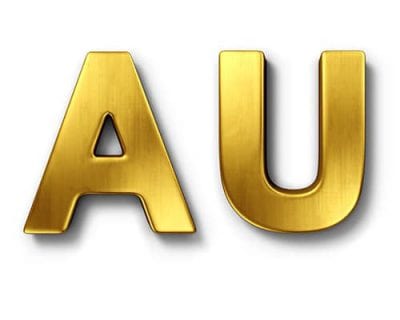
Gold waffles between positive and negative territory on CPI data. The yellow metal jumped over $10 an ounce to $1,844.70 on surprising inflation surge, but has since lost ground. It had dropped at the beginning of the trading day as the dollar strengthened and the treasury yields advanced.
The Consumer Price Index rose 4.2% for April, that’s the sharpest year-over-year gain since September 2008. Economists surveyed by Dow Jones had predicted an increase of 3.6%.
Gold has gotten a boost in recent days from a weak dollar — which fell to a two-month low amid growing fears of inflation. Gold, meanwhile, is a traditional hedge against inflation.
Front-month gold futures slipped $1.50 Tuesday to $1,836.10 an ounce on Comex, and the June contract is up 0.3% so far this week. Futures advanced 3% in April after dropping in January, February and March. Gold climbed $372 — or 24% — in 2020 because of uncertainty about the economy and the pandemic. The June contract is down $4.70 an ounce to $1,831.40 and the DG spot price is $1,828.00.
The CPI number was seen as especially important after the April jobs report last week showed that the unemployment rate rose to 6.1%, while nonfarm payrolls grew by 266,000, much less than the 1 million expected by analysts.
The next big question is how the inflation uptick will affect the central banks that have been pouring stimulus money into global economies. Federal Reserve policymakers are dismissing the current round of numbers as a blip, with the expectation that inflation will settles down later this year around the 2% range.
The weak job market could help take some pressure off the Federal Reserve to tighten its accommodative monetary policy, but the spike in inflation could derail that. Low interest rates are typically bullish for gold.
The COVID-19 virus has killed more than 3.31 million people worldwide and sickened more than 159.3 million. About 21% of the cases — and 18% of the deaths — are in the U.S. The country has about 32.8 million cases, more than any other nation, though its proportion of both new cases and deaths has been declining as the vaccination effort becomes more widespread and other parts of the world such as India have outbreaks.
Front-month silver futures gained 0.6% Tuesday to settle at $27.67 an ounce on Comex. The July contract advanced 0.7% in the first two days of the week. Silver rose 5.5% in April after dropping in February and March. It increased 47% in 2020. The July contract is down $0.152 on ounce to $27.515 and the DG spot price is $27.50.
Spot palladium lost 1.7% Tuesday to $2,942.00 an ounce and is down 0.1% this week. The metal jumped 12% last month amid strong industrial demand. Palladium also rose in February and March. It rallied 26% in 2020. The palladium is currently up $27.80 an ounce to $2,970.00.
Spot platinum fell 1.5% Tuesday to $1,249.10 an ounce and dropped 0.6% in the first two days of the week. Platinum increased 0.8% in April after trading flat in March. The autocatalyst metal rose 11% in 2020. The DG spot price for platinum is up $1.20 an ounce to $1,247.40, currently.
Disclaimer: This editorial has been prepared by Dillon Gage Metals for information and thought-provoking purposes only and does not purport to predict or forecast actual results. This editorial opinion is not to be construed as investment advice or as a recommendation regarding any particular security, commodity or course of action. Opinions expressed herein cannot be attributable to Dillon Gage. Reasonable people may disagree about the events discussed or opinions expressed herein. In the event any of the assumptions used herein do not come to fruition, results are likely to vary substantially. It is not a solicitation or advice to make any exchange in commodities, securities or other financial instruments. No part of this editorial may be reproduced in any manner, in whole or in part, without the prior written permission of Dillon Gage Metals. Dillon Gage Metals shall not have any liability for any damages of any kind whatsoever relating to this editorial. You should consult your advisers with respect to these areas. By posting this editorial, you acknowledge, understand and accept this disclaimer.
